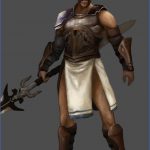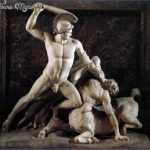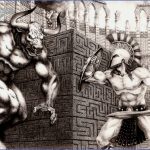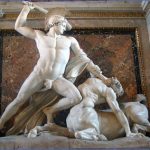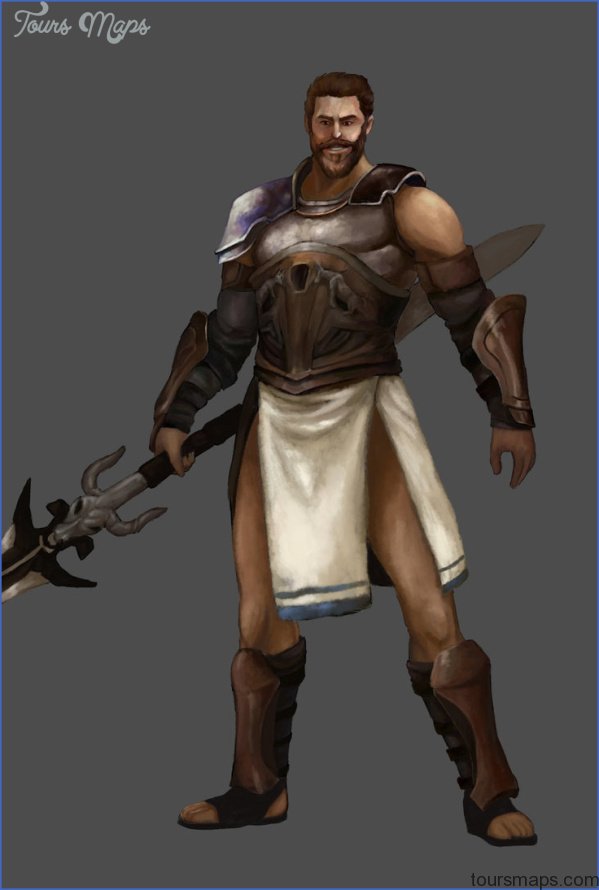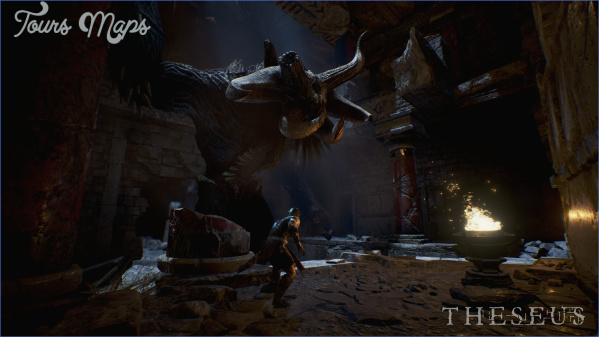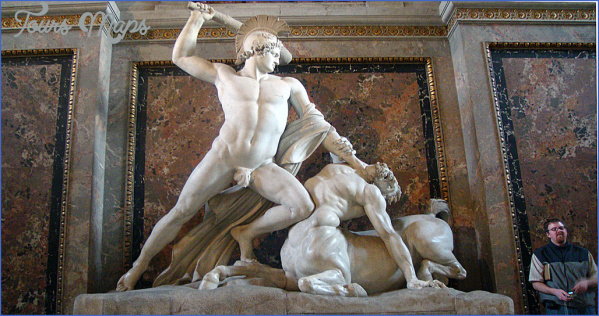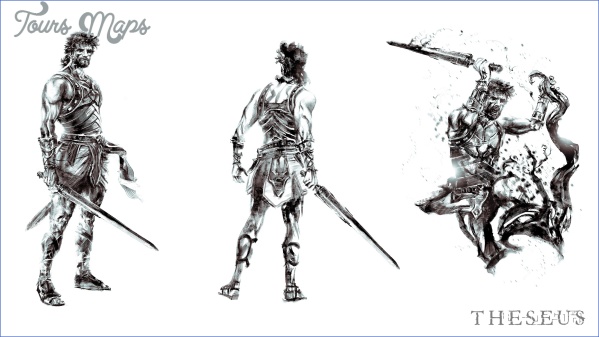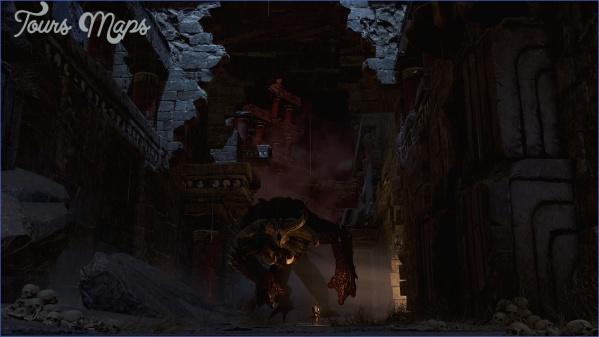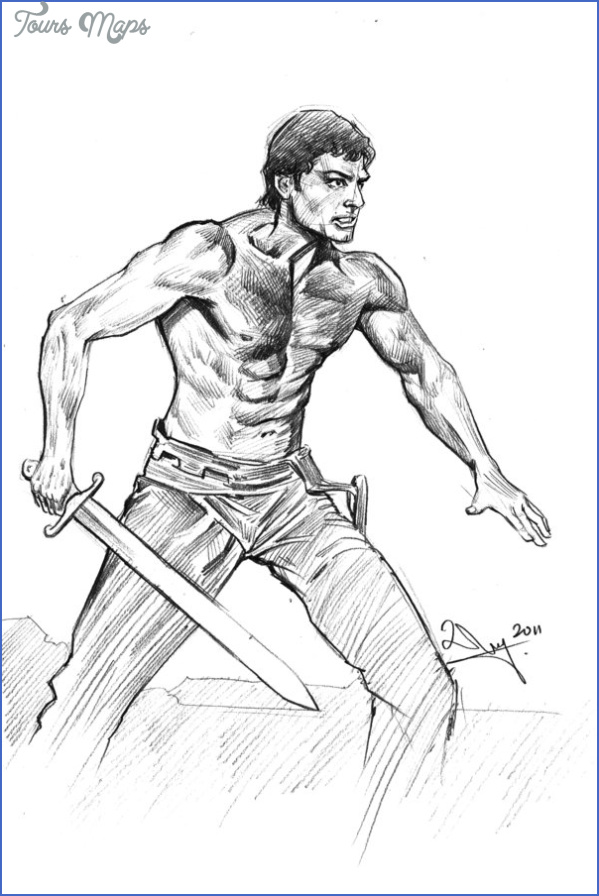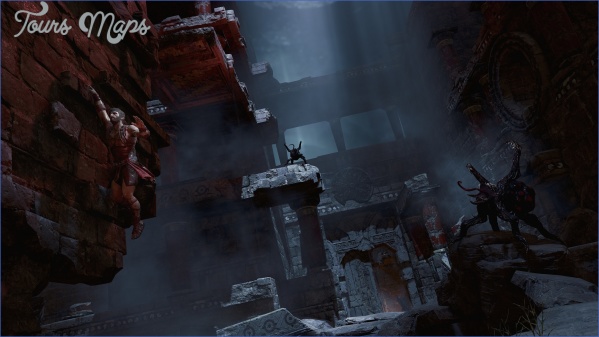As for Poseidon’s white bull, which was now rampaging free, Heracles abducted it as one of his labours to mainland Greece, where it settled at Marathon, near Athens. When it continued to wreak havoc, Aegeus, king of Athens, promised to reward whoever who could destroy it. Among those who tried was Minos’ son Androgeus, but in the encounter it was he, not the bull, who lost his life. (Another version of Androgeus’ death suggests that, while in Athens to compete in games, he conspired with Aegeus’ enemies, so Aegeus had him murdered.)
Victorious, Theseus drags the dead Minotaur from the labyrinth. (Fifth-century BC Athenian red figure wine cup.)
By chance, Minos was at that time attacking mainland Greece with his incomparable navy. When the news reached him, he called down a curse. At once earthquakes struck, crops failed, and people and animals died of starvation; and while other Greek states managed to appease the gods, in Attica the situation worsened. Urgently Aegeus consulted the Delphic oracle, which announced that the curse would be lifted only if Athens sent seven young men and seven young women every nine years to Crete as offerings to the Minotaur.
When Theseus came to Athens to claim his inheritance, he overcame the bull, dragged it up to the Acropolis and sacrificed it to Poseidon. Then, since it was time for the next consignment of Athenian youth to be sent Knossos, he announced his intention to join them and, with the gods’ support, kill the
Minotaur. In Crete, Minos greeted Theseus with a challenge – to prove he was the son not merely of Aegeus but of Poseidon by retrieving a gold ring that Minos hurled far out to sea. Immediately, Theseus dived off the quayside and disappeared, resurfacing after long minutes to wade ashore, the ring held high. All marvelled – and none more than Ariadne. For, as soon as Minos’ daughter saw him, she fell in love with Theseus.
Theseus & the Minotaur Photo Gallery
That night she met with him. Daedalus had taught her the secret of the labyrinth, which she agreed to share if Theseus took her back to Athens as his wife. The prince agreed, and, evading Minos’ guards, they crept to the mouth of the labyrinth. Here Ariadne gave Theseus a sword. Then, placing in his hands a ball of wool, she took hold of the loose end and instructed him to let the rest unravel as he walked through the twisting corridors. By rolling the ball up again he would find his way back out.
Into the inky blackness of the low-roofed passageway Theseus disappeared, his only guide the fetid stench and ever louder bellows of the Minotaur. Finally he reached its lair, and with a roar the Minotaur attacked. Clutching at the hair between its deadly horns, Theseus lunged with his sword, calling to Poseidon to accept his sacrifice. The blade sank home. The Minotaur fell gasping to the ground. Leaving it to thrash in its own blood, Theseus escaped, rewinding the wool until he regained the entrance and the sweet night air.
Theseus and Ariadne freed the other Athenians and escaped across the low hills to the sea. Hurriedly they smashed holes in Minos’ ships to prevent pursuit, boarded their own boat and set sail. By sunrise they reached the island of Dia. But here (or at Naxos), despite his promises, Theseus abandoned Ariadne as she was sleeping. When she found him gone, the princess cursed Theseus, but she was not downcast for long. Dionysus saw her, fell in love with her and – transporting her to the stars – made her his bride. (In Dionysus’ rescue and transformation of the abandoned heroine some discern a distant echo of a story similar to that of Persephone or Adonis exploring the cycles of death and rebirth. In another version of the myth, Homer tells how Ariadne was killed on Dia by Artemis ‘before Theseus could take pleasure in her’, while Plutarch records that she died in childbirth on Cyprus.)
Theseus sailed on to Delos, where he sacrificed to Apollo and choreographed the Crane Dance, performed in historical times, whose intricate patterns retraced the winding of the labyrinth and replicated the pattern on the dancing floor which, Homer says, ‘Daedalus once built for Ariadne of the lovely hair in the wide open spaces of Knossos’. Theseus set course for Athens, but because of Ariadne’s curse he forgot to change his sail from black to white. When Aegeus saw it, thinking his son was dead, he threw himself into the sea.
Maybe You Like Them Too
- Theseus & Peirithous
- The Voyage of the Argo Begins
- Minos, his Loves & his Family
- The Centaurs
- Athens in History & Today

